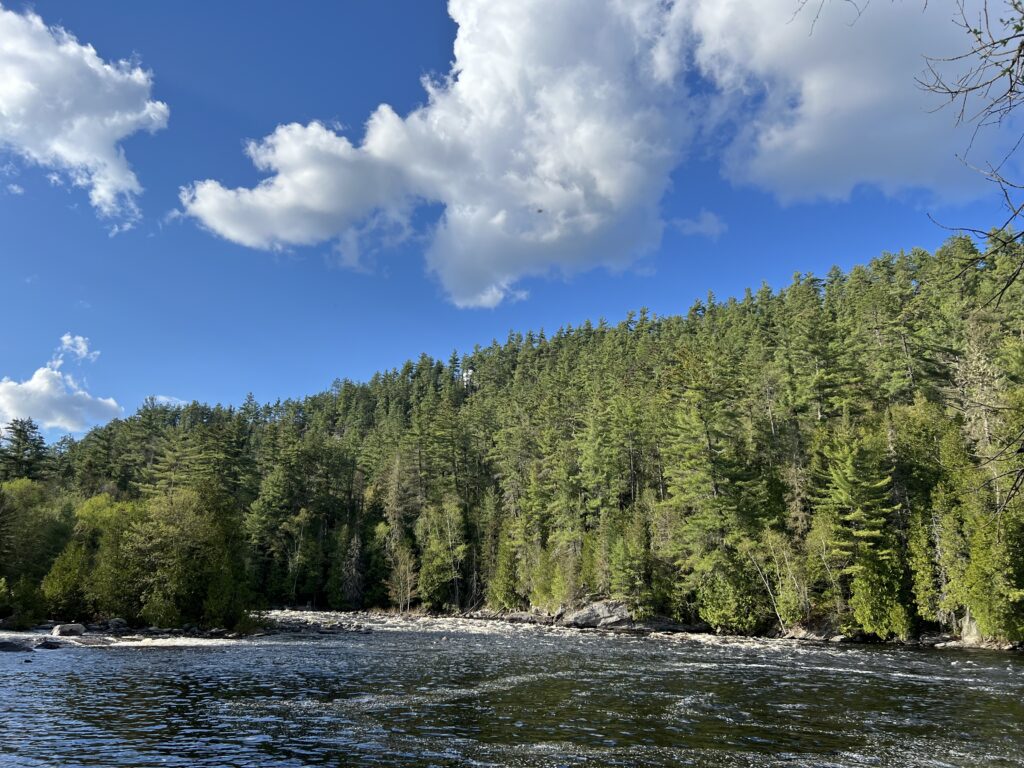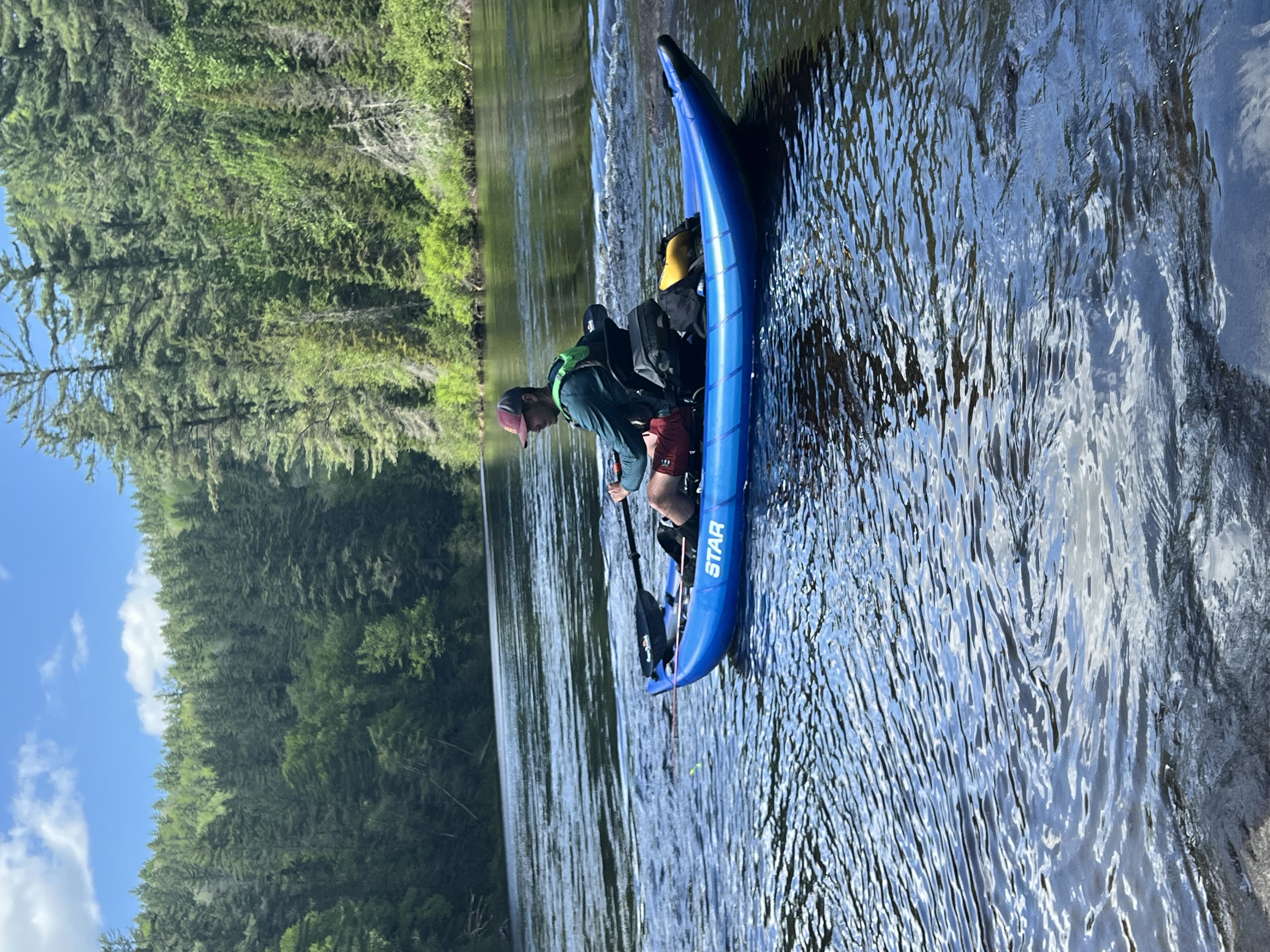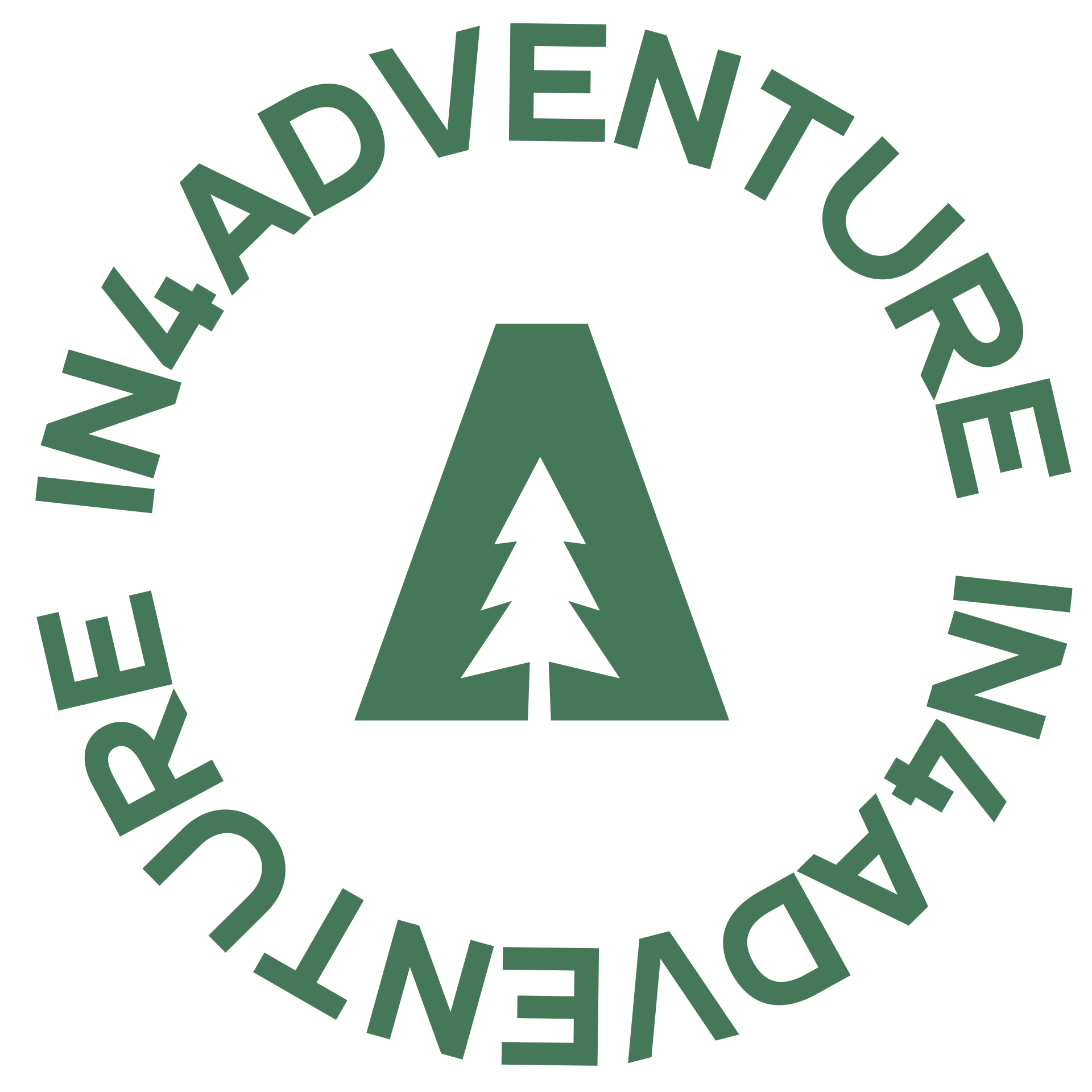My fish camp friends and I went on an epic river trip down the Dumoine River that flows from the remote wilderness of Quebec into the Ottawa River. I have been dreaming of a trip like this since we first started to go to fish camp some 20 years ago.

There is a lot of planning that goes into a 7 day river trip that has whitewater, so I thought I would share some of the steps to planning for a river trip. The time of year, the weather, the level of the river all matter when planning for an epic river trip.
Dumoine River Trip Planning
The Dumoine River, located in the western part of Quebec, is a premier destination for paddlers seeking a blend of challenging rapids, serene wilderness, and breathtaking scenery. This pristine river offers a memorable journey through dense forests, past towering cliffs, and alongside rich wildlife habitats. Inspired by Wally Schaber's comprehensive guide on Paddle Canada, this article provides updated information for planning an unforgettable trip down the Dumoine River, incorporating insights from various resources and updated details on checking water levels.
Overview of the Dumoine River
Stretching over 129 kilometers from Lac Dumoine to the Ottawa River, the Dumoine River is renowned for its variety of rapids ranging from Class I to Class IV. The river's remote location means that paddlers can enjoy an unspoiled natural environment, making it a sought-after route for wilderness enthusiasts.
Planning Your Trip down the Dumoine River

Duration and Itinerary of Your Trip
Most paddlers take between 5 to 7 days to navigate the entire length of the Dumoine River, though shorter trips are possible by starting at different access points. A typical trip starts at Lac Dumoine, the river's source, and ends at the Ottawa River. A shorter route for a 3-4 day trip starts at Benoit Bridge. Key stopping points along the route include:
- Robinson Lake: A popular campsite.
- Red Pine Rapids: Known for their challenging yet navigable rapids.
- Grande Chute: A must-see waterfall and a prime location for portaging.
To aid in navigation, the Dumoine River Map and Guide from Trailhead Paddleshack is an invaluable resource. This detailed map provides information on rapids, campsites, and portages.
Permits and Regulations
Before embarking on your trip, ensure you have all necessary permits. The Quebec's Ministry of Forests, Wildlife and Parks manages the region, and permits can be obtained through their website or at designated offices. There are two ZEC's (zone d'exploitation contrôlée) along the Dumoine River. ZEC Dumoine is located north of the Ottawa River and is the ZEC on river right when you are on the river. ZEC de Rapides-des-Joachims on river left. If you are camping on river right, you need camping permits from ZEC Dumoine. If you are river camping on river left, you will need permits from ZEC de Rapides-des-Joachims. Follow Leave No Trace principles to preserve the pristine nature of the river.
Checking Water Levels
Water levels significantly impact the difficulty and safety of navigating the Dumoine River. High water levels can make rapids more challenging, while low levels might expose more rocks, creating potential hazards. It's essential to check current water levels before your trip.

- Environment Canada provides updated river flow and water level data. Their website features real-time information for rivers across Canada, including the Dumoine River.
- Hydro-Québec also offers water level data, particularly useful during the spring melt when levels can rise rapidly.
- Local outfitters and paddling forums: Engage with local paddlers and outfitters who frequently update conditions based on recent trips.
Essential Gear
Canoe and Safety Equipment
A durable, high-volume whitewater canoe is ideal for handling the Dumoine's mixed conditions. Whitewater capable kayaks with storage, or whitewater inflatable kayaks are also other options. Essential safety gear includes:

Canoe or Kayak Gear
- Canoe or Inflatable Kayak: Suitable for your group size and water conditions.
- Canoe Float Bags: Provide buoyancy in case the canoe flips.
- Paddles: One for each person plus a spare.
- Helmets: One for each person.
- Dry Top and Dry Pants, or Dry Suit: Depending on weather and water temperatures.
- Personal Flotation Devices (PFDs): One for each person.
- Throw Rope and Rescue Gear: Z-drag and other essentials
- Dry Bags: For keeping clothes, electronics, and other items dry.
- Spray Skirts: If applicable, for rough water or rainy conditions.
- Repair Kit: Duct tape, patch kits, and tools for canoe and gear repairs.
- Rope and Carabiners: For securing gear and setting up tarps.
Camping Gear
- Tent: Lightweight, waterproof, and suitable for the number of people.
- Sleeping Bag: Rated for the expected temperatures.
- Sleeping Pad: For insulation and comfort.
- Ground Tarp: To place under your tent for additional protection.
- Camp Chairs: Lightweight and portable.
- Tarp and Poles: For creating a sheltered area.

Cooking and Food
- Stove and Fuel: Compact camping stove with sufficient fuel.
- Cookware: Pots, pans, utensils, and a portable grill.
- Water Filtration System: Pump, gravity filter, or purification tablets.
- Food: Non-perishable, lightweight, and high-energy food items.
- Screen Tent: for cooking and eating bug free
- Bear Canister or Locking Barrel: For safe food storage.
- Cooler: If you plan to bring perishable items, ensure it’s bear-proof.
- Biodegradable Soap: For washing dishes and personal hygiene.

Clothing
- Base Layers: Moisture-wicking underwear, long johns and shirts (with hoodie).
- Insulating Layers: Fleece or down jackets for warmth at night.
- Outer Layers: Waterproof and windproof jackets and pants.
- Footwear: Waterproof or neoprene boots for portaging, sandals for camp, extra socks.
- Hat and Gloves: For sun protection and warmth.
- Swimsuit: For swimming and bathing.

Safety and Navigation
- Maps and Compass: Topographic maps of the area and a reliable compass.
- GPS Device: For additional navigation support.
- First Aid Kit: Comprehensive and tailored to remote travel.
- Emergency Beacon: Personal locator beacon (PLB) or satellite messenger.
- Whistle and Signal Mirror: For emergency signaling.
- Fire Starter Kit: Waterproof matches, lighters, and fire starters.
- Bug Repellent and Head Net: To protect against insects.
Miscellaneous
- Multitool or Knife: For various tasks and repairs.
- Headlamp and Extra Batteries: For lighting in the dark.
- Sunscreen and Lip Balm: With high SPF for sun protection.
- Personal Hygiene Items: Toothbrush, toothpaste, biodegradable wipes.
- Notebook and Pen: For journaling or noting important information.
- Camera: To capture memories (with waterproof case if needed).
Optional Items
- Fishing Gear: If you plan to fish.
- Books or E-Reader: For leisure.
- Binoculars: For wildlife viewing.
- Small Charger: For recharging small electronics.
- Small Daypack: For short hikes or day trips from the main campsite.
Packing Tips
- Organize Gear: Use dry bags and stuff sacks to categorize and waterproof items.
- Distribute Weight Evenly: Balance the canoe by distributing gear evenly.
- Test Pack: Before the trip, do a test pack to ensure everything fits and is balanced.
Camping and Cooking Supplies
Given the remote nature of the Dumoine River, self-sufficiency is key. Pack lightweight, durable camping gear, and enough food for the duration of your trip. A bear-proof food storage solution is crucial to protect your supplies.

Wildlife and Environmental Considerations
The Dumoine River is home to a diverse array of wildlife, including moose, black bears, and various bird species. Respect wildlife by maintaining a safe distance and keeping campsites clean. The river's ecosystem is fragile, so it's vital to practice eco-friendly camping and paddling habits. There is a thunderbox at every designated campsite along the Dumoine River in both ZECs, be sure to pay your camping fees and enjoy using the thunderboxes that sometimes come with a view.
Additional Resources
- Voyageur Tripper: This site offers a comprehensive trip report and planning advice, including tips on what to expect and how to prepare .
- Black Feather: As an outfitter, Black Feather provides guided trips and extensive knowledge about the Dumoine River, making it a great resource for less experienced paddlers or those seeking guided adventures .
- Online Map: Check out this online map of the Dumoine River by Paddling Maps.
- Noel Leclerc: Provides shuttle service and car drop off
Conclusion
A trip down the Dumoine River is a journey into one of Quebec's most beautiful and remote wilderness areas. By planning carefully, checking water levels, and respecting the natural environment, you can ensure a safe and exhilarating adventure. For detailed trip planning, updated route information, and community insights, refer to the resources provided by Paddle Canada, Trailhead Paddleshack, Voyageur Tripper, and Black Feather. Happy paddling!









